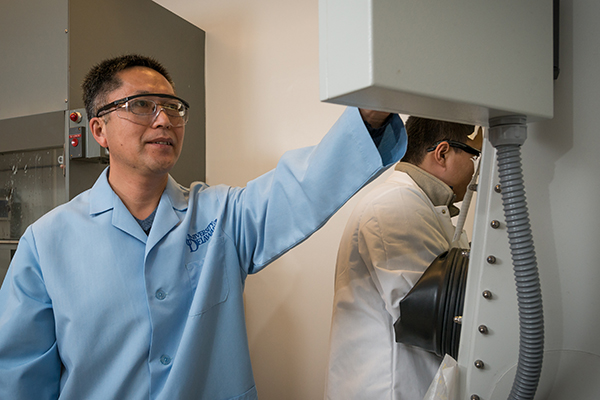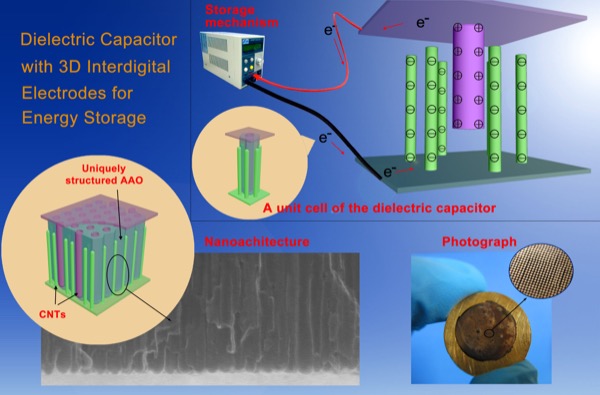


Capacitor breakthrough
Nanotechnology offers new approach to increasing storage ability of dielectric capacitors
2:14 p.m., Oct. 23, 2015--For Back to the Future fans, this week marked a milestone that took three decades to reach.
Oct. 21, 2015, was the day that Doc Brown and Marty McFly landed in the future in their DeLorean, with time travel made possible by a “flux capacitor.”
Research Stories
Chronic wounds
Prof. Heck's legacy
While the flux capacitor still conjures sci-fi images, capacitors are now key components of portable electronics, computing systems and electric vehicles.
In contrast to batteries, which offer high storage capacity but slow delivery of energy, capacitors provide fast delivery but poor storage capacity.
A great deal of effort has been devoted to improving this feature — known as energy density — of dielectric capacitors, which comprise an insulating material sandwiched between two conducting metal plates.
Now, a group of researchers at the University of Delaware and the Chinese Academy of Sciences has successfully used nanotechnology to achieve this goal.
The work is reported in a paper, “Dielectric Capacitors with Three-Dimensional Nanoscale Interdigital Electrodes for Energy Storage,” published in Science Advances, the first open-access, online-only journal of AAAS.
“With our approach, we achieved an energy density of about two watt-hours per kilogram, which is significantly higher than that of other dielectric capacitor structures reported in the literature,” says Bingqing Wei, professor of mechanical engineering at UD.
“To our knowledge, this is the first time that 3-D nanoscale interdigital electrodes have been realized in practice,” he adds. “With their high surface area relative to their size, carbon nanotubes embedded in uniquely designed and structured 3-D architectures have enabled us to address the low ability of dielectric capacitors to store energy.”
One of the keys to the success of the new capacitor is an interdigitated design — similar to interwoven fingers between two hands with “gloves” — that dramatically decreases the distance between opposing electrodes and therefore increases the ability of the capacitor to store an electrical charge.
Another significant feature of the capacitors is that the unique new three-dimensional nanoscale electrode also offers high voltage breakdown, which means that the integrated dielectric material (alumina, Al2O3) does not easily fail in its intended function as an insulator.
“In contrast to previous versions, we expect our newly structured dielectric capacitors to be more suitable for field applications that require high energy density storage, such as accessory power supply and hybrid power systems,” Wei says.
About the research
Co-authors on the paper include Fangming Han, Guowen Meng, Fei Zhou, Li Song, Xinhua Li, Xiaoye Hu, Xiaoguang Zhu, Bing Wu and Bingqing Wei.
The work was funded by the National Key Basic Research Program of China, the National Natural Science Foundation of China, the CAS/SAFEA (Chinese Academy of Sciences/State AQ9 Administration of Foreign Experts Affairs) International Partnership Program for Creative Research Teams, and the Anhui Provincial Natural Science Foundation.
Wei was involved in experimental design and data analysis. The samples were prepared and characterized by his colleagues in China.
Article by Diane Kukich
Photo by Kathy F. Atkinson









